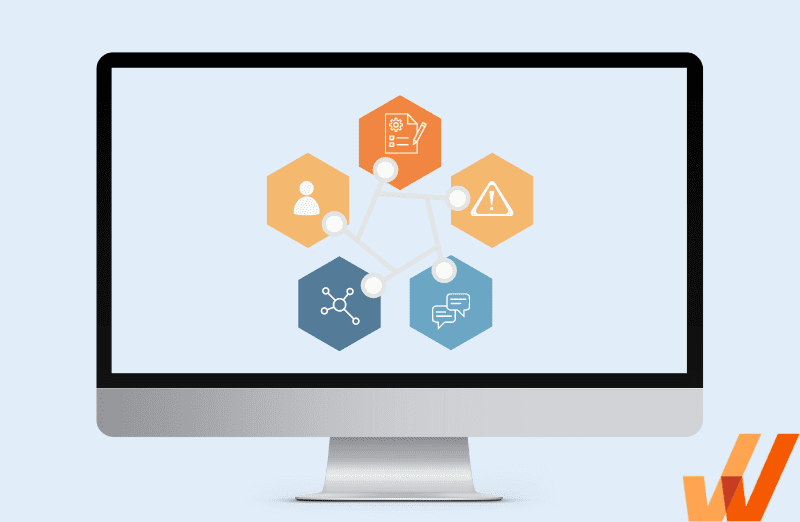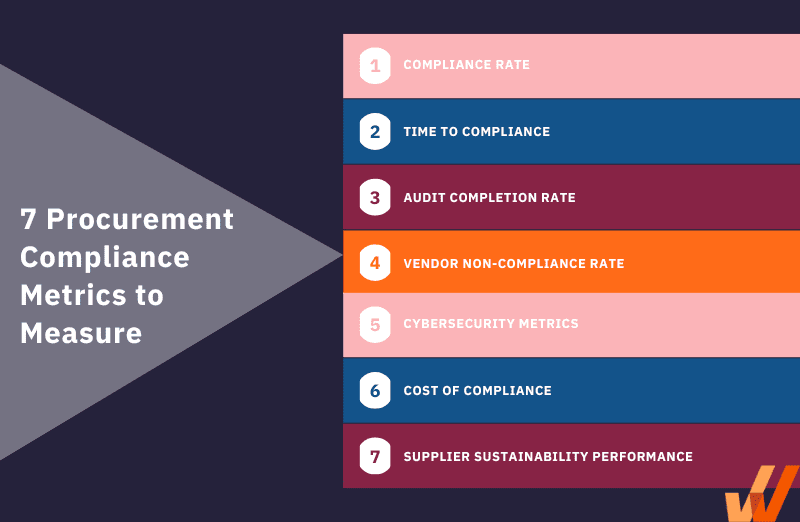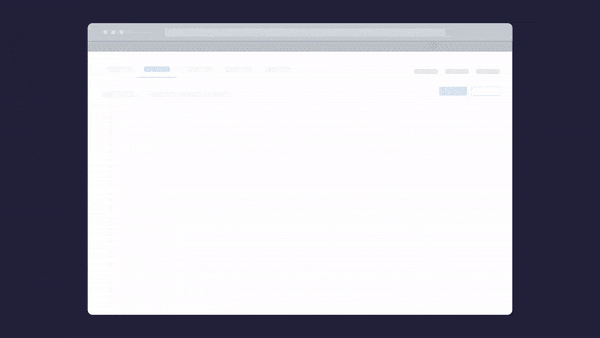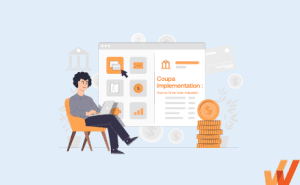Procurement Compliance 101: Best Practices, Challenges (2024)
- Published: January 27, 2023
- Updated: November 20, 2023


Procurement compliance laws may be complex, but that doesn’t give companies an excuse to bypass them.
Many well-known corporations have come under fire for violating procurement regulations like the Foreign Corrupt Practices Act. The implications of non-compliance are not to be taken lightly. These corporations have been subject to tens of millions of dollars, all while having to restore damages made to their reputability.
Compliance management was a big topic on the radar for chief procurement officers (CPOs) in 2021, taking up 10 to 20% of the time for most high-performers. In fact, over half of CPOs say compliance and risk management are core areas of focus for digitization.
What does it mean to build an agile and modern procurement compliance program? We explore challenges, best practices, and measures of success.
What Is Procurement Compliance?
Procurement compliance involves efforts to equip procurement activities with guidelines and policies that comply with procurement laws and regulations. Procurement compliance aims to ensure that vendors, contracts, and purchases influenced by the procurement department will not risk organizations legally and financially.
4 Types of Procurement Compliance
Compliance requirements don’t always look the same. Depending on your industry and the vendors you’ll be engaging with, your procurement activities will have specific guidelines and goals. Here are four types of procurement and the compliance processes that can come with them:
1. Procurement of goods and services
Compliance procedures define the terms of partnering with contracted suppliers to acquire goods and services. This includes terms for obtaining pricing quotations, conducting vendor management and evaluation, and exceptions or amendments that have to be made for different pricing thresholds.
2. Public procurement
Procurement activities with governments and public organizations are subject to more regulations and take longer to obtain compliance. For example, the Federal Acquisition Regulation is used by all executive agencies to define the terms for acquiring goods and services with appropriated funds.
3. Construction procurement
Procurement in the construction industry also has to account for unpredictable supply chains and strict standards for project parts and technical specifications. Compliance protocols aim to protect companies from unqualified subcontractors, purchasing delays, and quality assurance issues that are detrimental to the safety and feasibility of projects.
4. Procurement in the healthcare industry
Healthcare procurement compliance is very strict because it involves federal funding and the acquisition of pharmaceuticals and medical devices. These regulations protect the health and safety of patients by ensuring the most access to quality care at suitable prices.
7 Procurement Compliance Metrics to Measure
Close to 60% of high-performing chief procurement officers are formally measured on procurement compliance and risk management KPIs.
Compliance metrics give your procurement team a holistic view of compliance management, from spending to supplier behavior and deadlines that need to be met. With the seven metrics outlined below, your company can predict procurement risk, optimize supplier relationships, and implement the right measures to overcome bottlenecks.
1. Compliance rate
The share of contracts and bids that meet all requirements outlined by procurement regulations and laws.
2. Time to compliance
The average time taken for procurement processes to be completed in accordance with requirement procurement regulations and laws.
3. Audit completion rate
The percentage of procurement projects that have successfully completed an approved compliance and risk auditing plan.
4. Vendor non-compliance rate
The share of vendors that do not meet procurement requirements and regulations when they submit contract bids to your organization
5. Cybersecurity metrics
A measure of cybersecurity effectiveness that can give your team insight into the frequency and duration of cybersecurity incidents.
6. Cost of compliance
The total cost of securing all your procurement activities with the safeguards and expertise needed to meet procurement regulations.
7. Supplier sustainability performance
A measure of your supplier’s ability to show a positive environmental, social, and economic impact, such as energy efficiency and waste reduction indicators.

8 Best Practices for Ensuring Procurement Compliance
Companies need to build and execute their procurement compliance program methodically and with consistency to achieve the best results. Here are eight tips designed to keep your efforts on track.
1. Develop and implement a procurement compliance policy
Your compliance policy directs procurement officers and vendors toward meeting compliance requirements. Some organizations create compliance checklists to make their policies actionable and easy to follow, especially when describing procedures like implementing compliance tools, tracking procurement spending, and identifying red flags.
For example, the Organisation for Economic Co-operation and Development (OECD) helps procurement officers follow compliance policies by creating a checklist that outlines recommendations on:
- Warning signs to look out for when businesses are submitting bids
- Errors to look out for when bidding documents are submitted
- How to identify patterns in biding prices
- Evaluating suspicious behavior from vendors
2. Train employees
More than half of high-performing procurement teams use software tools to accelerate procurement processes, including compliance management. You can use procurement software to set up automation for tasks like purchase approval workflows, invoice authorization, and audit management.
But software tools are only effective if procurement teams know how to use them. A survey by Whatfix found that 78% of software users don’t have the expertise required to use the high-tech tools meant to make their jobs easier.
Procurement teams can increase software adoption and proficiency by using digital adoption platforms (DAPs) to familiarize themselves with the tool’s features and capabilities. DAPs like Whatfix can be used to deliver immersive app experiences through behavioral nudges like self-help widgets, guided product flows, and video tutorials.
Here’s an example of how you can use in-app pop-ups to nudge employees toward taking specific actions on the tool.

Whatfix also provides a solution to maintaining data quality and integrity with smart field validation tips that can be created based on rules and user segmentation, ensuring compliance across your customers, employees, suppliers, vendors, or who ever your users are.
3. Establish a system for supplier screening and management
Before engaging with suppliers, you must ensure that you have a robust and transparent structure for vetting vendors, processing documents, and managing ongoing relationships. For instance, the OECD’s compliance checklist outlines protocols for checking meetings, events, and documents for suspicious supplier behavior that may indicate bid rigging.
To cover all your bases, define the steps that your team should take at each stage of the supplier selection process:
- Identification: List down the best options your team can take to locate the suppliers most likely to meet your company’s needs, such as recommendations from professional networks, trade publications and associations, as well as consultants.
- Qualification: Work with stakeholders to create a standardized set of criteria for helping teams define the most qualified suppliers to shortlist.
- Evaluation: Build a request for proposal (RFP) process equipped with thorough checkpoints for vetting each supplier from a compliance standpoint.
4. Implement strong internal controls
Procurement internal controls set the tone for your entire procurement process, from identifying procurement needs to conducting the vendor solicitation process and awarding bids. These policies aim to walk your procurement team through each step of obtaining the procurement compliance process, including when and how to leverage compliance management tools to streamline tasks and communication with suppliers.
The goal is to create a frictionless workflow for obtaining compliance requirements in a timely and cost-effective way. Your internal controls could establish actions like compulsory pre-qualification processes for suppliers, regular contract audits, and customized spending limits.
5. Communicate with suppliers
HICX’s 2021 Supplier Experience Survey identified that 64% of respondents believe that communication with suppliers is their most significant pain point. The survey also discovered that suppliers still take an average of 15 to 28 days just to be onboarded with new projects.
This shows that right from the get-go, procurement teams can easily be placed in an environment where supplier communication is at risk of being delayed and unorganized.
Digital transformation is cited as a top priority to overcome communication bottlenecks. Solutions like DAPs can easily be deployed to reduce time spent training procurement employees and suppliers on leveraging digital tools for better communication. Marketboomer’s procurement team used Whatfix to save over 1700 hours of online training for buyers and suppliers who need to use their procurement automation software.
6. Monitor and measure compliance
Procurement risk is believed to have increased by over 70% during the pandemic, but only 26% of CPOs say they have enough visibility into their supplier base to predict risk.
Using the metrics we’ve outlined earlier in this article, build a plan that keeps your procurement team accountable for tracking compliance efforts regularly. We can take a page out of the books of local governments that create task forces that specialize in studying procurement contracts and compliance.
In the US, the city of Chicago’s involvement in the Government Procurement Compliance forum is meant to motivate standardized and transparent processes. The city established a task force that reviewed data systems to monitor and track contracts and vendors.
7. Implement cybersecurity measures
Cyberattacks on supply chains are becoming more intricate and difficult to recover from. In 2020, hackers used malware to compromise the systems of SolarWinds, a supply chain software provider. This targeted attack put the data of 18,000 organizations at risk. But here’s the scary part: the infiltrator was undetected for several months with access to large amounts of sensitive data.
Security has always been a critical component of compliance regulations, but even more so now. Here are a few cybersecurity measures that can help companies achieve procurement compliance:
- Encrypting sensitive data
- Deploying strict access controls to specify who can authorize specific data
- Using vulnerability management tools to scan networks for system weaknesses regularly
- Prioritizing security awareness training for employees and suppliers
- Implementing a crisis response plan
8. Seek expert advice
Given the supply chain complexities and cybersecurity threats that procurement teams must account for, many organizations get the help of consultants to build strong compliance strategies. These consultants have deep expertise in understanding procurement regulations and identifying vulnerabilities that put your procurement processes at risk.
A procurement compliance consultant can perform tasks such as:
- Reviewing contracts to make sure they comply with applicable laws
- Monitor new procurement regulations and advise companies on how to navigate them
- Help procurement teams prepare for audits
- Evaluate your internal controls for weaknesses that may lead to non-compliance
7 Challenges of Procurement Compliance
It’s no surprise that navigating compliance regulations can be overwhelming and resource-intensive. But if you know what’s in store, you’ll have a program with fewer holes. Let’s look at seven compliance-related challenges your procurement team can start preparing for today.
1. Keeping up with changing laws and regulations
Compliance laws don’t stay the same.
Take, for instance, the Federal Acquisition Regulation (FAR), which is updated roughly every one or two years. Amendments to the FAR can impact public institutions in many ways, like introducing new requirements for reporting counterfeit parts and changing policies that govern multiple-award contracts.
Regulatory changes can also be triggered by current events, like supply chain disruptions, cybersecurity accidents, and global pandemics.
Procurement teams must regularly stay up-to-date and informed on the regulatory landscape of procurement compliance to avoid last-minute hold-ups that disrupt the entire procurement process.
2. Managing supplier risks
56% of procurement firms witnessed their key suppliers go through bankruptcy or severe financial disruptions. Proactive supplier management and predictive analytics are some focus areas that CPOs are investing in to stay ahead of the curve and remain agile.
Here are a few of the top growth areas that high-performing procurement teams are focusing on to keep their processes flexible:
- Standardizing policies, systems, and data across the entire procurement network.
- Deploying employee training programs that teach teams about new ways to think, act and react to procurement challenges.
- Optimizing operational efficiency with automation tools.
- Cross-functional collaboration.
3. Ensuring transparency and fair competition
Without standardized internal controls and complete visibility into the communication within your procurement network, building a culture that prioritizes transparency and fairness can be challenging. Factors like poor accountability, conflicts of interest, corruption, and a lack of information clarity may jeopardize your compliance efforts.
However, you can avoid questionable and hasty procurement practices if your team has a framework to manage end-to-end compliance processes and improve them when needed. That includes many topics, like establishing performance metrics, communication guidelines, employee training, and digital transformation.
4. Managing ethical and sustainability risks
Procurement activities involve many moving parts that impact our economy, like human labor, raw goods produced from the environment, geopolitical boundaries, and consumer safety. Compliance laws prevent organizations from engaging in procurement practices that negatively impact these economic factors.
If organizations aren’t thorough with their compliance requirements and due diligence, they’re susceptible to risks that can damage them financially and legally. These include activities like labor rights violations, human rights violations, environmental pollution, and poor-quality product components.
5. Establishing and maintaining effective compliance programs
Organizations can overcome bottlenecks in consistency by reducing time spent on manual work, like using spreadsheets and paper documents to track and analyze financial data or spending hours on employee and supplier training. Marketboomer uses Whatfix to ensure their procurement tools keep buyers and suppliers on the same page throughout the possess.
“We particularly like the Whatfix task lists which create roadmaps to progress by our [procurement software] experts and monitor efficiency in real-time,” says Drew Nixon, who leads the customer success team at Marketboomer.

DREW NIXON
HEAD OF CUSTOMER SUCCESS, MARKETBOOMER
6. Managing cost and compliance
Over 90% of CPOs are measured by their ability to generate cost savings. But research shows that a lack of awareness of risks still persists, ultimately impacting their ability to budget effectively.
Compliance goes hand in hand with the financial health of the procurement function. Streamline your compliance and cost-saving efforts so you’re not spreading your team thin with repetitive tasks. For instance, you can deploy automation to map purchasing information to your budget planning and compliance workflows.
7. Cybersecurity
It can be scary wondering if your organization is secure enough to withstand data breaches. As we’ve discussed, there are many ways you can protect your systems from hackers. However, you must ensure your team is equipped with the expertise to implement these security measures without any vulnerabilities. Don’t hesitate to invest in new talent or a third-party risk management vendor who can confirm that everyone in your procurement network complies with security regulations. It’s also always wise to have your employees complete a cybersecurity training course to better protect themselves and the company.

As you may have deduced from some of the industry statistics presented in this article, digital transformation is at the top of most procurement leaders’ minds. But deploying an end-to-end compliance management platform isn’t the solution to inaccurate and inefficient processes.
Instead of spending hundreds of hours on online and in-person training modules, Whatfix lets your employees learn by doing and exploring new tools independently.
Our digital adoption platform allows you strategically deploy self-help content like guided product walkthroughs, smart tips, and task lists at high-impact and high-friction points in the product journey. Schedule a demo with our experts today to learn how Whatfix can transform your procurement compliance program.
Thank you for subscribing!


